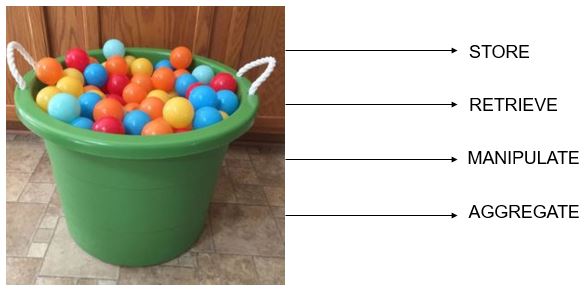A collection or container is an object that groups multiple elements into a single unit, they are used to store, retrieve, manipulate and aggregate data.

Collections Framework
A collections framework is a unified architecture for representing and manipulating collections. All collections frameworks contain the following:
- Interfaces: Interfaces are abstract data types that represent collections. Interfaces allow collections to be manipulated independently of the details of their representation. In object-oriented languages, interfaces generally form a hierarchy.
- Implementations: These are the concrete implementations of the collection interfaces. Implementations are reusable data structures.
- Algorithms: Algorithms are the methods that perform useful computations, such as searching and sorting, on objects that implement collection interfaces. The algorithms are said to be polymorphic: that is, the same method can be used on many different implementations of the appropriate collection interface. Algorithms possess reusable functionality.
Interfaces
The collection interfaces encapsulate different types of collections. These interfaces allow collections to be manipulated independently of the details of their representation.

- Collection — the root of the collection hierarchy. A collection represents a group of objects known as its elements. The Collection interface is the least common denominator that all collections implement and is used to pass collections around and to manipulate them when maximum generality is desired. Some types of collections allow duplicate elements, and others do not. Some are ordered and others are unordered. The Java platform doesn’t provide any direct implementations of this interface but provides implementations of more specific subinterfaces, such as Set and List.
- Set — a collection that cannot contain duplicate elements.
- SortedSet — a Set that maintains its elements in ascending order. Several additional operations are provided to take advantage of the ordering. Sorted sets are used for naturally ordered sets, such as word lists and membership rolls.
- List — an ordered collection (sometimes called a sequence). Lists can contain duplicate elements. The user of a List generally has precise control over where in the list each element is inserted and can access elements by their integer index (position).
- Queue — a collection used to hold multiple elements prior to processing. Besides basic Collection operations, a Queue provides additional insertion, extraction, and inspection operations.
Queues usually order elements in a FIFO (first-in, first-out) manner.
- Deque — Similar to queue but Deques can be used both as FIFO (first-in, first-out) and LIFO (last-in, first-out). In a deque all new elements can be inserted, retrieved and removed at both ends.
- Map — an object that maps keys to values. A Map cannot contain duplicate keys; each key can map to at most one value.
- SortedMap — a Map that maintains its mappings in ascending key order. This is the Map analog of SortedSet. Sorted maps are used for naturally ordered collections of key/value pairs, such as dictionaries and telephone directories.
If an unsupported operation is invoked, a collection throws an UnsupportedOperationException.
Note: All core collection interfaces are generic.
Source: The Java™ Tutorials

Facebook Comments